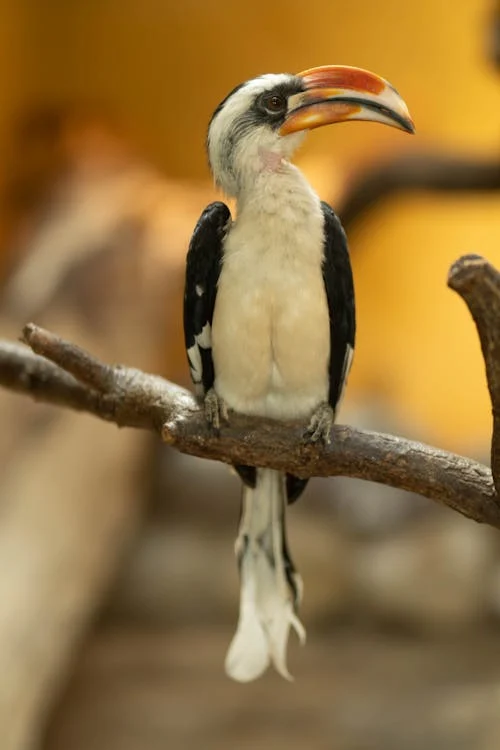By Raphael Mbunda
It was another misty morning as we drove along the eastern side of the Rift Valley, enjoying wonderful sightings. Just after leaving Engaruka, a Leopard Tortoise was crossing the road. It moved slowly, and we weren’t quite sure where it was headed. These charming reptiles, which blend so well into their environment, are known for their distinctively patterned shells resembling the spots of a leopard—hence the name. They are typically found in dry forested and scrubby habitats, feeding on various grasses and fruits. As we approached, it retracted into its shell with remarkable speed. We remained vigilant and respectful, giving it space and time. After a few minutes, it cautiously extended its head, crossed safely, and disappeared into the grass.
The first bird we observed was Rüppell’s Glossy Starling—a bird named after the German naturalist and explorer Eduard Rüppell. But it was the sight of a handsome male Von der Decken’s Hornbill (Tockus deckeni) perched on a thorny tree about ten metres away that truly captured our attention.
On this trip, I was accompanied by Mr Dionis Kessy, a veteran tour operator and an avid birdwatcher. He runs Sidai Safari and Tour Company.
The Von der Decken’s Hornbill is an exotic-looking bird, with striking pied plumage and a beautiful bill. It inhabits open country and is found primarily to the east of the East African Rift. It is named after the German explorer Baron Karl Klaus von der Decken, who first documented the species.
As the sun climbed higher, the serenity deepened, and more new bird species continued to reveal themselves. We spotted the Abyssinian Scimitarbill, Northern Crombec, Eastern Violet-backed Sunbird, Red-fronted Prinia, and were delighted to see the Foxy Lark—a fairly common bird in dry open bush and scrubby grassland.
The area forms part of the Maasai Steppe, which provides vital pasturelands essential for cattle herding, the primary livelihood of the Maasai people. On the plains, we observed a Maasai moran, spear upright, guiding his cattle across the sun-baked land. For the Maasai, cattle, goats, and sheep represent food, wealth, and status—a testament to their lives being deeply intertwined with their herds. We waved to the moran, offering him a bottle of cold water. He accepted it humbly and said, “Ashenale,” meaning “thank you.”
Further ahead, the majestic view of Oldonyo Lengai came into sight—a sacred volcano for the Maasai, standing tall in the wild. Known as the “Mountain of God,” its name is translated from the Maasai phrase Oldonyo le Enkai.
The wind stirred the golden savannah grasses, sending insects into the air and prompting a frenzy of activity. Fiscal Shrikes, Bee-eaters, Flycatchers, and other birds swooped in to take advantage of the sudden bounty.



